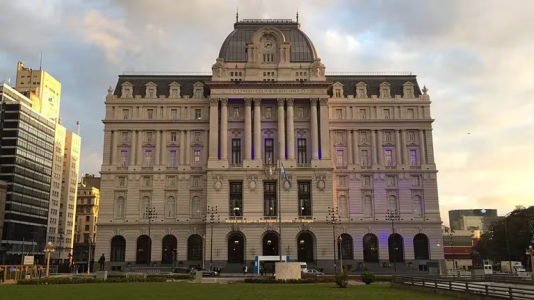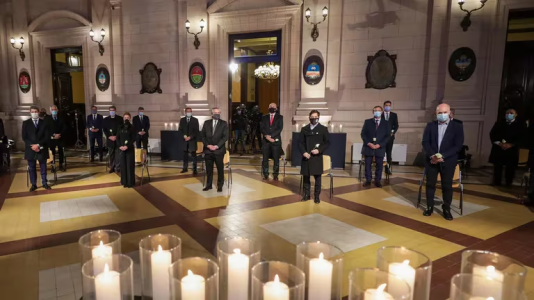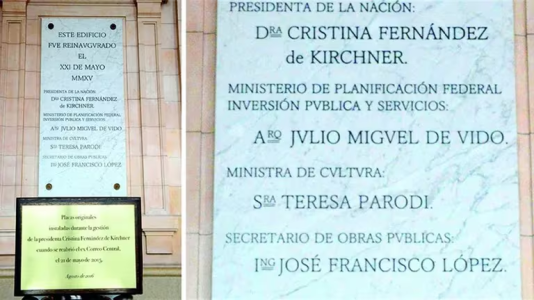All the Answers
Well-known member
With the Palacio Libertad, the Government advances its policy of “deskirchnerization” of public buildings - Infobae

Source:

Con el Palacio Libertad, el Gobierno avanza con su política de “deskirchnerización” de los edificios públicos
La administración de Milei busca despegarse de todo lo que se identifique con los gobiernos peronistas de las últimas dos décadas
May 08, 2024
Milei's administration seeks to detach itself from everything that is identified with the Peronist governments of the last two decades
By Eduardo Menegazzi

The CCK, one of the public buildings that the Government seeks to change the name of
The common idea among the officials and collaborators who move close to President Javier Milei is clear. Differentiate as much as possible from the ways and actions that Peronism deployed in recent decades, in most areas of politics. In that small table that is basically made up of his sister, Karina Milei, and his main advisor, Santiago Caputo, they consider that everything related to Kirchnerism has a negative connotation for society. To do this, they seek to distance themselves as much as possible from the themes and symbols of a recent era.
Within this framework, what is known in libertarian privacy as the “cultural battle”, the name change of public buildings appears. Rumors about a probable change in the name of the Kirchner Cultural Center circulated from the beginning of this administration as a symbol of “a change of era . ” The presidential spokesperson, Manuel Adorni, acknowledged this in a press conference at the end of March. And now, the Government, in this “deskirchnerization” process, will name it Palacio Libertad , although the legal mechanism to be used is not yet known.
One of the first steps had been taken with the Casa Patria Grande, in Carlos Pellegrini y Juncal, which Minister Sandra Pettovello uses as the headquarters of the Ministry of Human Capital. The official who manages the area that was previously called Social Development - with its iconic location in the middle of 9 de Julio Avenue where the image of Eva Perón shines - and which absorbed ministries such as Labor, Education and Culture, preferred the transfer to that place and almost immediately it was decided that it would be renamed Casa Patria Libertad.
The Minister of Economy, Luis Caputo, had been one of those who celebrated this measure. “Excellent, never again will a state building bear the name of corruption and decadence ,” the official published on the social network X (formerly Twitter) on that occasion.

One of the political acts that Alberto Fernández did in 2020 at the CCK facilities
Other gestures were added to these movements, such as that of Vice President Victoria Villarruel, who in the Senate decided to remove in February the bust of former President Néstor Kirchner that was in the Hall of Provinces of Congress. “We removed him because he was not a senator, he was not vice president, I am not his widow and here there has to be equality in all spaces. Simply for that reason,” was what Villarruel argued when Peronist legislators questioned her attitude.
In March there was another movement in the search to get rid of the images associated with Kirchnerism . It was International Women's Day, March 8, when the name of the Women's Hall was changed to the Hall of Heroes. They removed the images of figures linked to the woman ranging from Tita Merello to Mercedes Sosa, including Alicia Moreau de Justo and María Elena Walsh. They were replaced by, among others, photographs of Julio Argentino Roca, José de San Martín, Manuel Belgrano, Domingo Faustino Sarmiento, Juan Bautista Alberdi and even former president Carlos Saúl Menem. There they installed the government's digital communications offices.
On April 2, coinciding with the Day of the Veterans and the Fallen in the Malvinas War, there was another similar action. The Hall of Native Peoples was renamed “Heroes of Malvinas”, to honor those who fell in the war that occurred in 1982 in the South Atlantic.

The plaque that the Milei government ordered removed from the CCK before renaming the building
Eleven days later they decided to remove from the CCK the plaque that contained the details of the officials who had been part of the inauguration in 2015. In addition to Cristina, the then Minister of Federal Planning, Julio de Vido, and his Secretary of Works appeared there. Public, José Francisco López and the Minister of Culture, Teresa Parodi. De Vido and López were convicted of acts of corruption.
Now it will be the turn of the building with a surface area of more than 100,000 square meters, which has been transformed since its opening in 2015 into one of the most important cultural centers in Latin America. It was also used on numerous occasions for political events during successive governments. We will have to see how it is legally implemented , since the original name of the Bicentennial Cultural Center was changed in 2012 by law and another law or a DNU approved by the National Congress is needed to repeal it.
In the central hall of the CCK there was a statue of Néstor Kirchner made by the sculptor Miguel Gerónimo Villalba that Cristina Kirchner had donated to UNASUR and which she later decided to repatriate. Two days before Milei's inauguration, perhaps because she already had information about what could happen, by order of CFK they removed her. She was transferred to the municipality of Quilmes, in the southern area of the Conurbano, a district dominated by La Cámpora.

